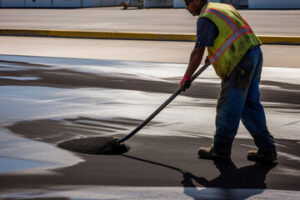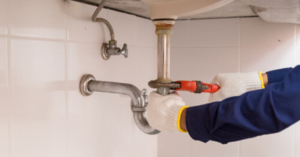Electrician prepares, assembles, installs, troubleshoots, tests, and repairs electrical wiring, fixtures, and control devices. They also collaborate with construction professionals and engineers to ensure that electrical installations meet specifications and safety codes.

Becoming a certified electrician offers many opportunities for career growth and advancement. Read on to learn more about the skills and qualifications needed for this rewarding occupation.
Electricians install, repair, and maintain electrical wiring, fixtures, and equipment in homes, businesses, and industrial facilities. They read blueprints and electrical diagrams to understand the layout of an electrical system before starting work, then use hand and power tools to assemble wires and connect them to circuit breakers or other equipment. They must be able to follow strict safety protocols to avoid injury from working with live electrical components.
In addition to assembling and connecting electrical wiring, electricians also test circuits and other components to ensure they are functioning properly. They may work on a variety of electric systems, including HVAC, lighting, and alarms. Some electricians also specialize in specific types of electrical work, such as voice, data, or video (VDV) installation and maintenance.
Electricians who specialize in residential work perform a wide range of maintenance services for homeowners and apartment tenants. They often rewire electrical components and fixtures to accommodate new appliances or to upgrade outdated wiring. They can also repair faulty outlets and other devices that are not functioning correctly. They might also install security systems, telecommunications, and network cabling.
Commercial electricians, on the other hand, typically perform maintenance on larger electrical systems within office buildings and retail spaces. They may also collaborate with other construction professionals, such as engineers and architects, to design electrical systems for new buildings or renovations.
If a power outage occurs in an area, an electrician is the person called to restore the electricity. They are the modern superheroes responsible for ensuring that homes, businesses, and industrial facilities have the energy they need to operate. They typically work in cramped, physically demanding environments and must adhere to stringent safety protocols.
Line electricians, also known as line electrical workers, specialize in maintaining high-voltage utility transmission and distribution systems. They may work on transmission lines that enter homes, businesses, and industrial facilities from power plants, or they might install electrical substations and voltage regulators. They are commonly employed by large utilities, but can be found in many other sectors as well.
Troubleshooting
When a fixture or appliance in your home stops working, or begins giving off sparks and other warning signs, it is time to call a professional. If you attempt to fix the problem yourself, you run the risk of electrocuting yourself or damaging the system even further. That is why it is crucial to trust a licensed electrician with the troubleshooting and repair process. The process is complex and requires a strong understanding of electrical theory and excellent manual dexterity. It is also a highly technical field that constantly changes to adapt to evolving safety protocols and advancements in technology.
One of the most important skills an electrician must possess is the ability to diagnose a problem and determine what parts are responsible for it. This process involves the following steps:
First, an electrician will identify which signals a malfunctioning device is sending. They will then examine these signals in order to find the source of the issue. This can include anything from a simple blown fuse to more complex issues like a short circuit.
Once the electrician has located the source of the malfunction, they will isolate or remove it from the fixture and then test it to see if it is working correctly. This can be done by analyzing the behavior of the fixture or using a wiring diagram to match it against the actual installation. Once the electrician has determined what component is causing the malfunction, they can then either repair or replace it.
Lastly, the electrician will perform the final test to ensure that the new or repaired component is functioning properly. They will repeat the troubleshooting process until they have identified and fixed the root cause of the problem.
Other electrical services that a reputable contractor will offer are rewiring and wiring upgrades. These services are essential for keeping homes and businesses safe and ensuring that electrical systems are up to code. A seasoned Electrician will be able to trace unexplained power surges or brownouts back to their source and can make sure that all outlets are not overloading their circuits with too many devices.
Maintenance
Electricians are responsible for the installation, repair, and maintenance of electrical power, communications, lighting, and control systems in homes, businesses, factories, and other buildings. They read blueprints and building plans to ensure electrical work is up to code, collaborate with construction professionals, and troubleshoot problems during construction or renovation projects. Electricians also inspect and maintain existing electrical systems to identify safety hazards and restore them to safe operating condition.
Faulty wiring can cause electrical fires or shocks, so it’s important that electricians inspect and repair these components when necessary. They check for signs of wear and tear, like overheating or rusting, and replace or repair damaged wiring. They also install outlets, switches, and other electrical fixtures to keep your home or business running smoothly.
Many electricians specialize in low voltage systems, such as alarms, security, or network cabling. These electricians are knowledgeable about the latest technology and can integrate these systems seamlessly into existing electrical infrastructures. They can also recommend upgrades that improve the efficiency and security of your electrical system.
In addition to installing and maintaining electrical systems, electricians are often called upon to troubleshoot issues with appliances and machinery. They use their knowledge of circuitry and electrical theory to identify the source of an issue and develop effective solutions. This involves examining wiring, testing equipment and components with tools like voltmeters and oscilloscopes, and collaborating with other professional engineers and technicians to resolve complex electrical problems.
The most challenging aspect of being an Electrician is keeping up with evolving electrical codes and safety regulations. This requires continuous learning and a commitment to staying up-to-date with new technologies and sustainable practices. Additionally, working as an Electrician often involves working in cramped and physically demanding environments where the risk of injury is high. Thus, it’s crucial that these professionals adhere to strict safety protocols at all times.
Repair
Faulty wiring is a major safety hazard and can lead to electrical fires, shocks, or injuries. Electricians can repair or replace faulty wiring to ensure your home’s electrical system is safe and working properly.
Flickering lights are another common sign that it’s time to call an electrician. This can indicate a variety of issues, such as overloaded circuits, faulty switches, or outdated wiring. An electrician will be able to diagnose the problem and fix it quickly and easily.
Many older homes have fewer outlets than newer ones, leading to extension cords being used in order to accommodate all of the devices and appliances. This isn’t a safe or convenient solution, and it’s important to have an electrician add outlets to your home in order to improve safety and convenience.
If your home has a fuse box that constantly blows, it’s likely because the wires inside are frayed or have melted. This is a serious fire hazard and needs to be addressed immediately. Electricians can repair or replace fuses and ensure that your home’s wiring is safe and up to code.
Electrical Panel Upgrades
If you’re running out of space in your home’s electrical panel, it may be time to invest in a new one. Electricians can install a new panel that will be able to handle the power demands of your home and keep it running smoothly.
Lighting Installation
Electricians can help you update your home’s lighting with new fixtures and bulbs. They can also install smart home technology like lighting control systems and thermostats.
Industrial Electrician
Industrial electrical work involves high-voltage systems, motor controls, and programmable logic controllers (PLCs). Industrial electricians are skilled in maintaining and repairing these complex machines, making them essential for any manufacturing or processing business that relies on them.


